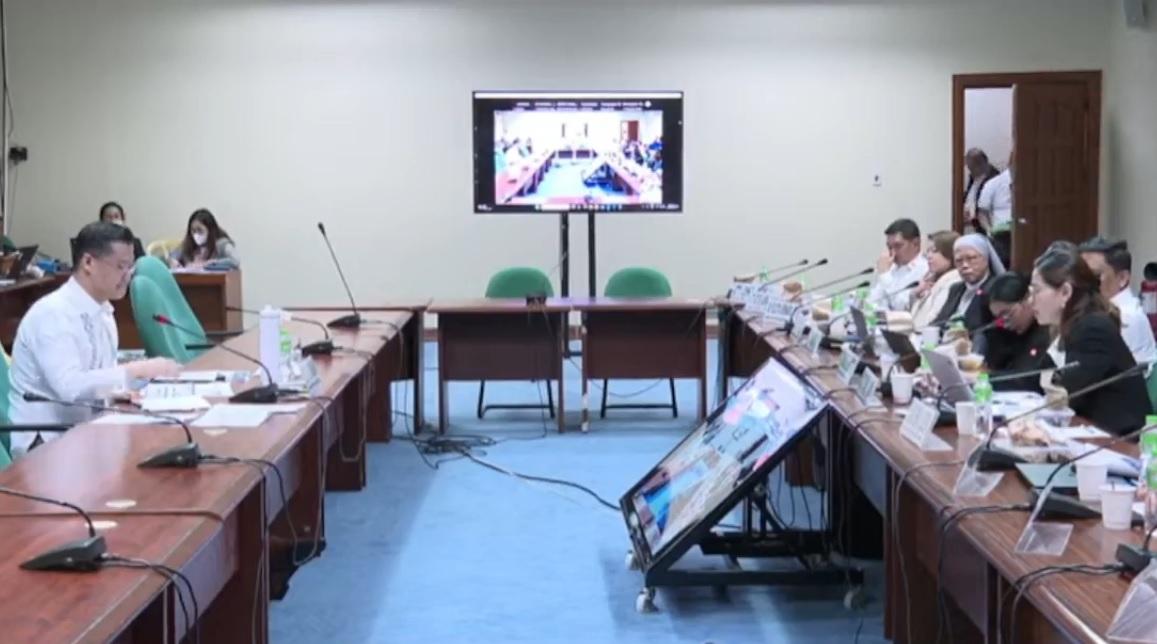Senate flags 19K ‘ghost students” of senior high school voucher program


By HANA BORDEY, GMA Integrated News
Over 19,000 “ghost students” or undocumented beneficiaries of the voucher program under the Expanded Government Assistance to Students and Teachers in Private Education Act (E-GASTPE) were disclosed at the Senate on Wednesday.
At the continuation of the Senate committee on basic education’s hearing on the implementation of E-GASTPE, Senator Sherwin Gatchalian started by scrutinizing the 2016 to 2017 Commission on Audit (COA) report where it found that there were initially 115 Senior High School Voucher Program (SHSVP) beneficiaries who were considered ghost students as they were billed under the program more than once in the same school year.
COA Supervising Auditor Imelda Celso explained that those who were considered ghost students are those whose absence is not satisfactorily explained; those under a specific school unit but who attend a different school or campus; those listed as enrolled but have not attended classes since the start of the semester; those listed multiple times in the same school or in different junior high school.
While the COA official clarified that some are not “ghost students” per se due to an error in monitoring the listing of beneficiaries, Gatchalian pointed out that since there are refunds for their fees, then they are considered as such.
“The mere fact there are refunds, then there are ghost students. If you think if you admit to a refund then that means you admit that there is something wrong, whether a ghost student, a clerical error or an administrative error, then there is something wrong,” Gatchalian said.
Celso said the COA will look into these cases from the period of 2016 to 2018 and will render an opinion on whether there was an intention to defraud the government.
Gatchalian then showed a report from the Private Education Assistance Committee (PEAC) and cited as examples one school which has P80 million to be refunded, another with P68 million, and a third with P14 million.
“How did it reach this big? Because if it is one transfer, maybe administrative error, I would assume it would run to hundreds… I saw in a PEAC report that we are still expecting P239 million to be refunded,” Gatchalian said.
“Paano umabot ng P239 million ang ire-refund from the voucher program? And then one school can rack up to P80 million in terms of refund. Ano ito naipon or the magnitude of students?” he asked.
PEAC Monitoring and Processing Officer Rodrick Malonzo replied that in the case of the first school, it was not able to present any documents proving and substantiating the existence of about 4,600 pupils.
“We specifically asked for the class records of the VPBs (voucher program beneficiary), the school form 1 which is a DepEd required school form, DepEd school form 2 and their birth certificates. Unfortunately, for majority or for a big portion of their VPBs, they were not able to present any documents during the visit, during the monitoring activity,” Malonzo said.
If the PEAC report on undocumented E-GASTPE beneficiaries will be summed up, Gatchalian said the number would be “close to 19,000.”
This prompted Gatchalian to ask, “Can I call them literally ghost students?”
Malonzo said they call them “undocumented VPBs.”
He said the case is ongoing where the said school indicated that they plan to submit documents to PEAC, but the requirements have yet to be received by them.
“It’s close to 19,000 undocumented students, tama? So the undocument(ed) can be literally no students eh. Can be. Possible. We don’t know,” Gatchalian said.
As the senator mentioned the need to conduct further investigation into the matter due to possible “willful attempt to submit fraudulent beneficiaries,” Malonzo mentioned anecdotal reports of some schools trying to “game” the SHSVP.
“We’ve received anecdotal reports coming from the field that there are schools that are trying to game the voucher program. But with regards to whether the school is, kung sadya ba or hindi, I think for some schools that have less than ten or one out of a hundred VPBs, I think this may be an honest mistake from the school. But when the numbers reach hundreds this is really a significant issue,” Malonzo said.
Meanwhile, Department of Education (DepEd) Director III Tara Rama said they already proposed another layer to verify the existence of SHSVP beneficiaries.
“Before we pay, we actually check it or cross-check it with our learners information system and in fact, right now not all billings of private schools were paid because we found out that there’s discrepancy. That’s why we hold po ‘yung payment nila. Only those that billing statements which are in sync with our learners information system, that’s the only payment that we released. The rest po we hold it in the central office and that is only what we did when GASTPE was created,” Rama said. — BM, GMA Integrated News














